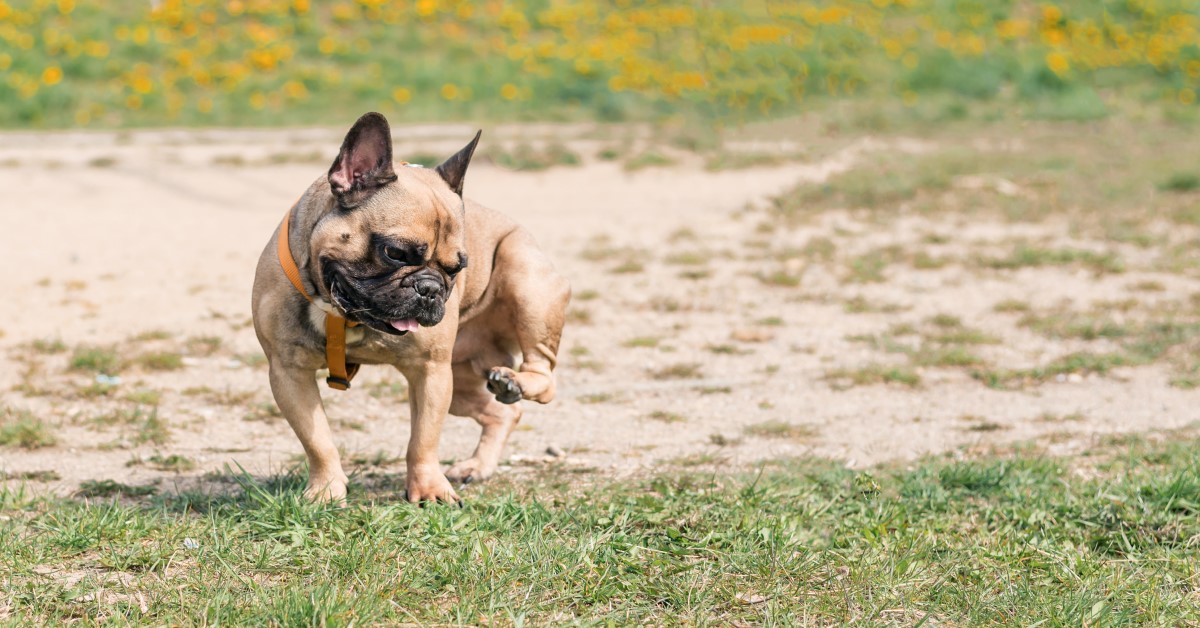Helpful Tips For Moving With Pets
Good preparation beforehand can help things so smoother and easier

Whether you're moving across town or to another state, the task of moving can be complicated, especially when you have a family pet coming with you. As with any huge task, preparation beforehand can help things go smoother and faster, with less problems. As preparations get underway, make sure your pet's needs and traveling arrangements are given their necessary priority, and are not left as an afterthought.
BEFORE THE MOVE
1. Contact the State Veterinarian's Office or State Department of Agriculture requesting the pet laws and regulations of your destination state. If you have a wolf, monkey, big cat, or any other large exotic animal, you will more than likely need a special permit to keep it.
2. After complying with the state regulations, check with the City Clerk's office in your new community for local pet ordinances. "Leash Laws" are common, licensing may be necessary, and the number of pets per household may also be limited. Many communities have zoning laws that prohibit you from keeping pets such as goats, pigs and chickens in residential areas. You do not want to find this out the hard way with a fine or summons.
3. If you are moving into a condo or apartment and will be leasing or renting the property, make sure your lease or rental agreement allows pets on the premises before you move in. You will not want to jeopardize your rental or lease agreement or be fined for violating the restrictions which apply to it. It will be easier for both you and your pet if you have to leave him with a friend or family member, than be forced to take him to a shelter or give him to strangers.
4. Special documentation - Before your departure, make sure you have a recent photograph of your pet (in case the animal gets lost), and the proper pet documents, such as a health certificate less than 10 days old. Most states require one for dogs. Many states require one for cats, birds, and certain exotic animals as well. Check with your veterinarian or the state animal control agency in your new location to determine if your pet requires a health certificate. The certificate must be issued by a licensed veterinarian, and current inoculation records must accompany it.
5. Identification - Whether you are traveling by air or car, any pet that can wear a collar should have one on, with an ID tag secured to it. Birds may be identified by leg bands. The ID tag should include the pet's name, your name, and the destination address. In addition to ID, most states require dogs, cats and some exotic animals to also have a rabies tag on their collars.
All pets require special attention and consideration when moving, and the essential ingredient to your pet's stress-free move is good pre-planning. When moving with pets, there are a number of things to consider when making preparations before the actual move takes place:
1. Health condition of your pet.
It’s important that you ensure your pet is in good health before moving to a new location, especially in another city or state, as you may be unfamiliar with the veterinarians in your new location, and too busy once you arrive to locate a new clinic for your pet. Just as you are comfortable with your doctor or dentist, your pet has also become comfortable with his veterinarian. Moving can be stressful for a pet, so it is vital that he be healthy, so he has less stress to deal with while getting used to his new surroundings. Also, transporting a sick pet only makes the move more difficult.
If your pet has a medical condition, it's important to make sure you refill any necessary prescriptions for chronic illnesses or special needs before you leave the area. This will allow you enough time to find a veterinarian in your new location without having to worry about your pet's medications and general medical needs. Before you move, remember to obtain your pet's full medical records, including his rabies certificate* and the complete schedule of any other immunizations he has received. This information will be very helpful to your new veterinarian.
*All animals transported by air and sea or crossing territorial borders must have such certificates.If your pet has any special dietary needs, make sure you have an ample supply before you move. If the food needs to be ordered by a special manufacturer, place a refill order in time to receive it at your current address, to make sure you do not run out in your new location. It may be more difficult to obtain, especially until you choose a new vet. Make sure you keep some food with you and do not have it all packed with your belongings, just in case you do not receive your furnishing right away.
2. General behavior of your pet.
We all know our pets, and how they behave at home with family and friends. However, some pets are too aggressive around strangers to allow them entry into your home to begin packing your belongings. If you hire a moving company to pack your items before transport, the number of strangers, as well as the strange noises, may upset your pet.
Call the packing company and let them know you have pets. Ask if they have any special requirements for restraining pets during the packing phase, and make sure you follow their instructions. Also ask the moving company if their employees have experience with and are trained to work around animals.
CHOOSING A MOVING METHOD
Now you are ready to relocate your pet, but must decide how to do it. You can hire a professional pet-moving service to transport your four-legged family member or do it yourself. Movers are not permitted to transport pets, nor are buses or trains (Seeing Eye dogs are the exception). If your pet requires special handling when moving, you may consider using a professional pet service that can take care of everything for you.
The importance of a sturdy, comfortable carrier for your pet cannot be overemphasized. A carrier should be large enough for the pet to stand up, turn around, and lie down. It must have adequate cross-ventilation and a leak-proof bottom with layers of absorbent lining. It should have a secure closing mechanism on the door, but do not lock the kennel. Federal regulations require that your pet be accessible in the event of an emergency.
If traveling by air, most airlines have pet carriers available for purchase with advance notice of at least 48 hours. These kennels meet all US Dept. of Agriculture (USDA) and International Air Transport Association (IATA) requirements for pet transportation. Pet stores may also have acceptable carriers for sale. Birds must be placed in durable pet carriers other than conventional bird cages.
TRAVEL PREPARATIONS
Here are some things to do before the actual departure to help minimize the stress for your pet:
1. Get your pet accustomed to the pet carrier several days before the actual flight or car ride by using it as a bed. Placing a favorite toy or blanket inside will make your pet feel more secure.
2. Feed your pet a light meal five to six hours before you leave, but do not give it water two hours before you leave, except on very hot days.
3. Exercise your pet (on a leash) and administer any required medications. After placing your pet into the carrier, secure the closing mechanism and fasten the leash to the outside of the container.
If transporting your pet on an airplane:
1. Pets must be picked up from the airport within a reasonable time (usually within 24 hours of arrival). If not, they will either be returned to point of origin or placed in a kennel at the owner's expense.
2. Be aware that airlines may refuse to transport a pet if:
a. it cannot be shipped within a 24-hour period,
b. the ground temperature is below 45°F or above 85°F at either origin or destination,
c. it is not in a USDA and IATA-approved container or without proper identification and certificates,
d. the pet has been sedated, unless the drug name, dosage and how it was administered is noted on the carrier.
If transporting your pet in a car:
Car travel is the most common means of pet transportation. It provides a feeling of security for your pet (as well as for you), and it is less expensive. Again, advance planning is essential. Traveling with your pet can be a pleasant experience when you follow certain guidelines:
a. If your pet is not used to car travel, take it on short rides before the trip to help it get accustomed to the motion of the car. If your pet is prone to motion sickness, consult your veterinarian about medication to help reduce or eliminate the symptoms.
b. Do not feed or water your pet for a few hours before you leave. After you are on the road, feed only once daily. Take a supply of water from home; different water on the road can cause upset stomachs for pets. Make frequent stops to water and exercise your pet, and keep your pet on a leash for its protection and yours.
c. While riding in the car, do not let your pet hang out the window. Dirt and insects can fly into its eyes, causing irritation and infection. Keep power-windows locked to prevent your pet, especially cats, from lowering the window and jumping out. If your car is not equipped with air conditioning, leave the windows cracked 1" to 1 1/2". Pets need plenty of air, especially when it is hot, or when the animal is prone to motion sickness.
d. Small animals, such as gerbils, hamsters and guinea pigs are sensitive to hot and cold temperatures. A good guide is your own comfort zone; if you are hot or cold, chances are your small pet will be, too.
e. Try not to leave your pet in the car alone for more than a few minutes. If it is unavoidable, lock the car doors, crack windows for cross-ventilation, and leave water with your pet.
f. Remove the water and food dishes of birds and other small caged animals to avoid messy spills while the car is moving.
g. Feed and water pets at stops along the way. Keep your bird's cage covered to help calm it. If you are transporting fish in plastic bags, do not put them in direct sunlight or cold drafts.
ARRIVING AT YOUR NEW HOME
Like people, pets need time to become accustomed to a new house and new faces. Using your pet's favorite food bowl, bedding and toys will aid greatly in helping your pet to feel at home in his new surroundings. Once you and your family are settled in, locate a veterinarian. Ask your previous veterinarian for a recommendation before you move, or you can contact the local Humane Society or the American Animal Hospital Association (AAHA) at 800-252-2242 for the names of veterinarians in your area.
Reminder: If you pet has an ID implant, remember to have updated contact information.
Ready to start saving money on pet wellness care?
Then take a look at Mint Wellness, the pet wellness plan that provides fast reimbursement on routine pet care. Save on vaccinations, wellness exams, preventatives, dental, and more!
Learn More


